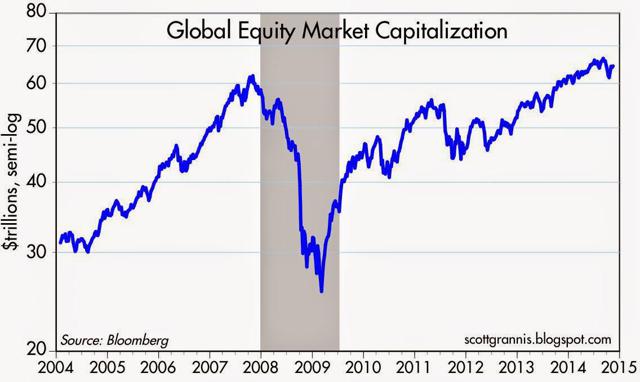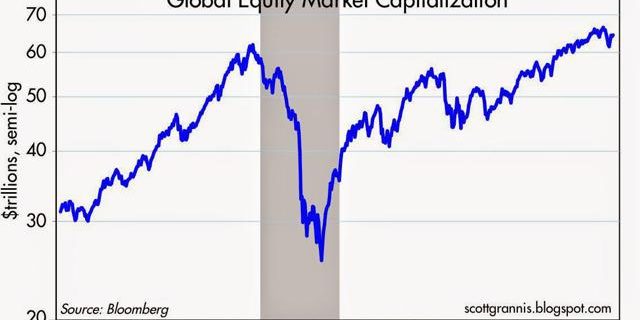The purpose of central bank financial repression and ZIRP is to distort and inflate asset prices. Our monetary politburo even admits that it is in the monetary scam business via its self-serving doctrine called “wealth effects”.
The game here is to drive the stock market averages ever higher through massive liquidity injections into the Wall Street dealer markets. This purportedly causes people to feel richer and to spend and invest more, creating a virtuous circle of prosperity, world without end.
We know by now, however, that “wealth effects” money printing does not help the main street economy. And while it does produce awesome financial market gains—–these turn out to be unsustainable bubbles that inexorably crash. Since the turn of the century, most central banks have participated in this scam—either because they have embraced the Keynesian gospel or have joined the money printing party out of defensive necessity to protect against inflation of their own exchange rates. So the resulting financial bubbles have been global in scope.
During the last global boom cycle, central banks led by the Fed and the US housing bubble drove the aggregate capitalization of world stock markets from $30 trillion to $60 trillion in less than 48 months. Needless to say, the world's sustainable wealth did not grow by even a fraction of that amount during this brief interval between 2004 and 2008.
Indeed, in much of Europe and the US real wealth was being destroyed by vast malinvestments in housing, real estate and public infrastructure; and in EM economies like China's, similar wealth destruction was manifested in monumental, uneconomic investments in resource extraction and industrial production and transportation. Nevertheless, this central bank fueled financial bubble reached a tipping point in 2008, and then plunged violently.
As shown below, within a 15 month period, nearly $35 trillion of global equity market cap evaporated, taking global market cap to below its pre-2004 level.

It didn't take central banks long to double down, of course. During the period since the Lehman failure in September 2008, the aggregate balance sheet of global central banks has exploded from approximately $6 trillion to $16 trillion, thereby inciting the recrudescence of an even more fantastic global financial bubble.
As shown above, global equity market cap has soared by $40 trillion since the March 2009 bottom to new all-times highs. But do not be troubled. The Wall Street stock peddlers who moonlight as “economists” and “strategists” assure us that the 2008-2009 plunge was all a vast mistake——a temporary panic in the financial markets caused by a lapse of faith in the capacity of the state through its central banking and fiscal branches to keep the GDP “print” expanding, profits growing and the stock averages rising.



